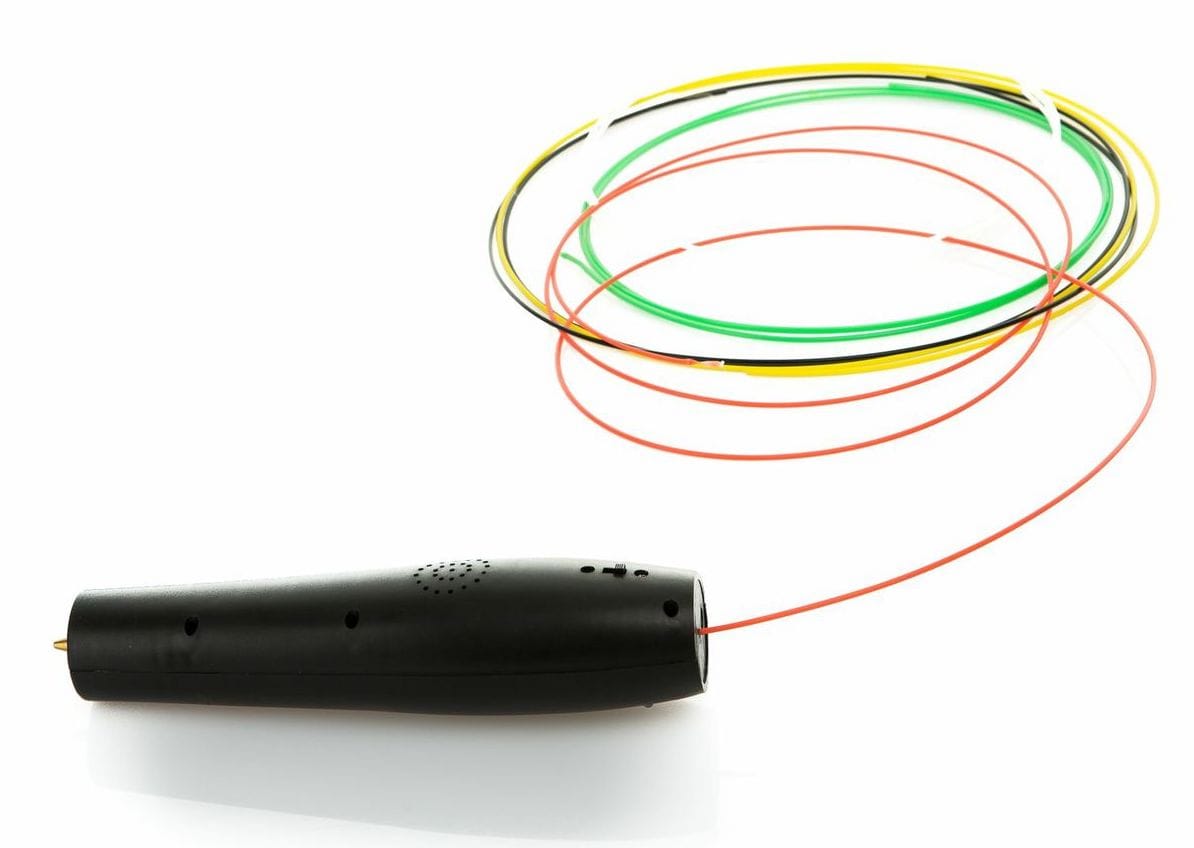
Without fail, each month there is are busy announcements of the latest “3D printing pen”. That’s fine, except for one thing.
They are not printers.
These handheld devices typically extrude softened filament and are a kind of manually driven 3D printer extruder. It’s like holding a hotend in your hand, safely, usually.
These devices can be used to “draw” flimsy structures in three dimensions, perhaps leading to their unfortunate name. Yes, they can make 3D objects, like 3D printers, but so can a guy with a hammer and nails.
We don’t call that guy a printer, but we can these devices printers, for some reason.
They are as much a printer as a handheld drill is a CNC mill. In other words, they are not.
Why did they pick up this name? I suspect because of someone’s attempt to ride the extreme public attention paid to 3D printing in 2012-2015. And why not? If people could not afford an actual 3D printer, perhaps they could afford a sub-USD$100 3D printing pen!
I think these devices are certainly fun for kids, but for any serious work their uses are infrequent. One possibility is for repairing plastic objects, including 3D printed items. However, it seems to me the uses of this technology beyond pure fun and artistic endeavors are few.
I suspect the primary users are kids, and that raises the safety concern. Consider that these machines have a very hot nozzle, perhaps 200C+ (400F for those readers in the USA, Cayman Islands, Palau, Bahamas and Belize). That’s as hot as an operating kitchen oven, and you certainly wouldn’t want your kids playing with that.
To avoid the heat, there is one “cold” 3D printing pen. Instead of a hot nozzle, it uses liquid photopolymer resin and a UV light source to solidify it as you move the pen.
Honestly, this could be even more hazardous than the hot nozzle, as liquid photopolymers are typically toxic, and sometimes very toxic.
You certainly wouldn’t want your kids playing with that.
Even if you are ok with the hazardous aspects, there is still the problem of fatigue. Imagine building a large 3D object with such a pen. You’d be very slowly – and as precisely as you can – move a pen in three dimensions without arm support. How long would it take before you needed a break? How sore will your arm be after six hours of building?
That’s something I don’t really want to find out.
But you will, if you pursue 3D printing pens.
Apologies for the rant, but this week I’ve seen yet another 3D printing pen released to the public.

